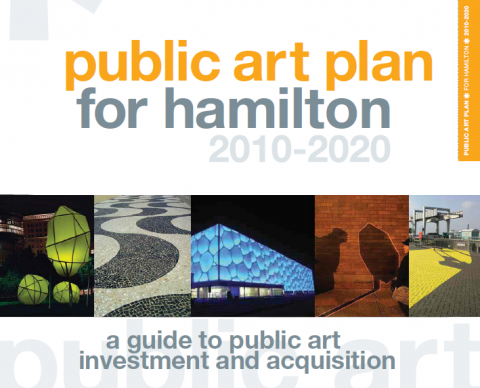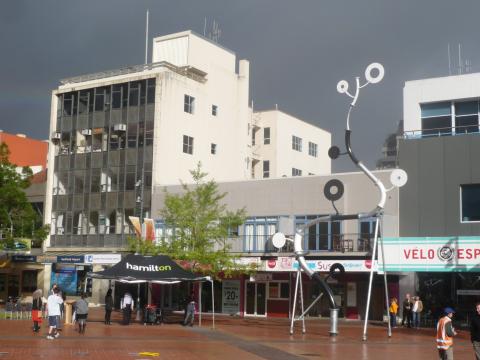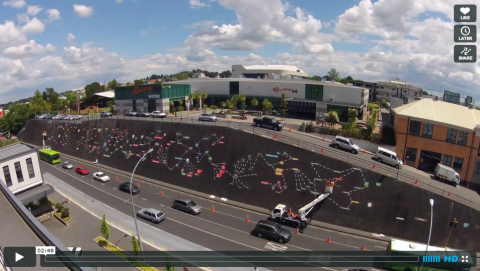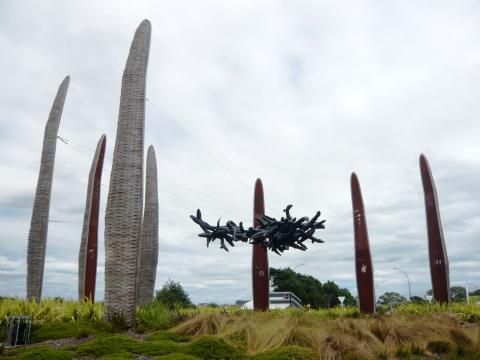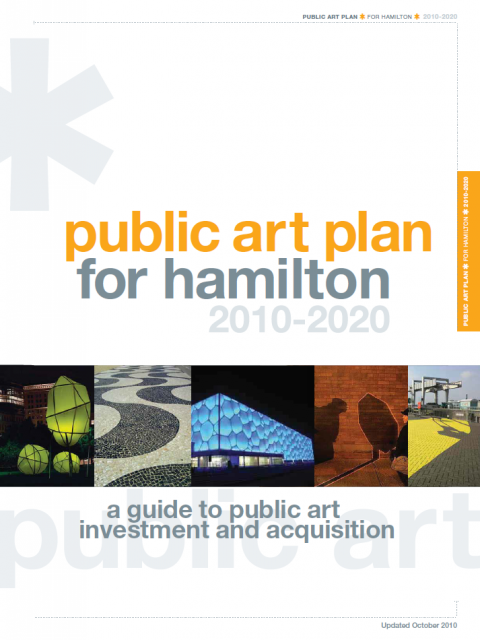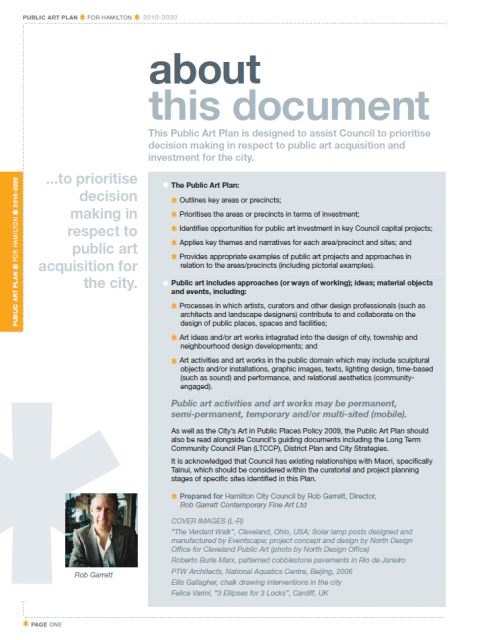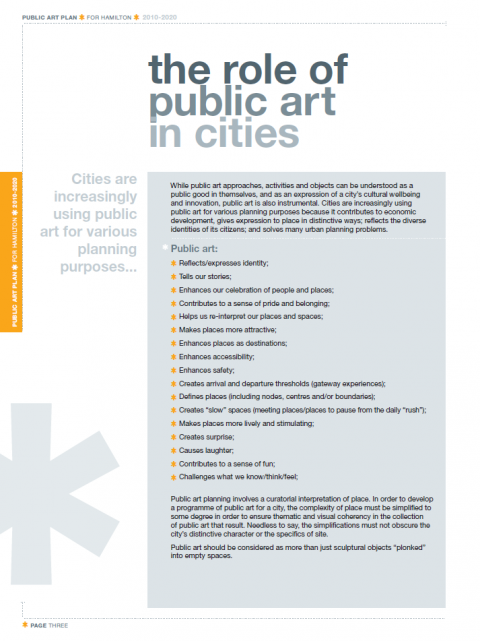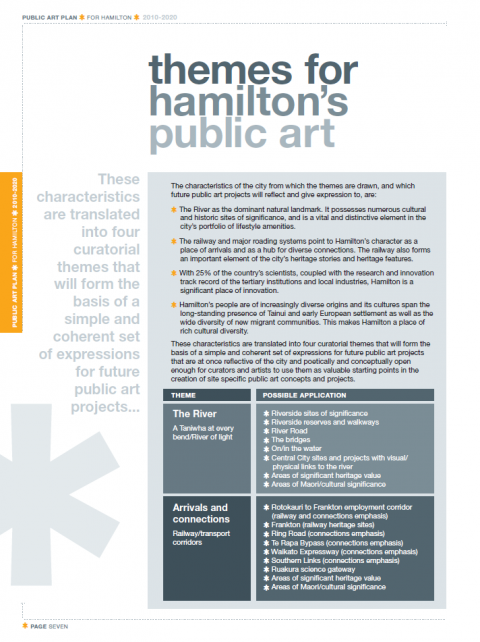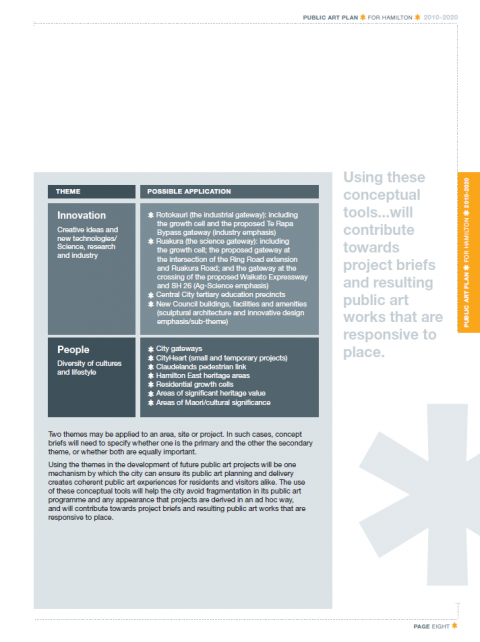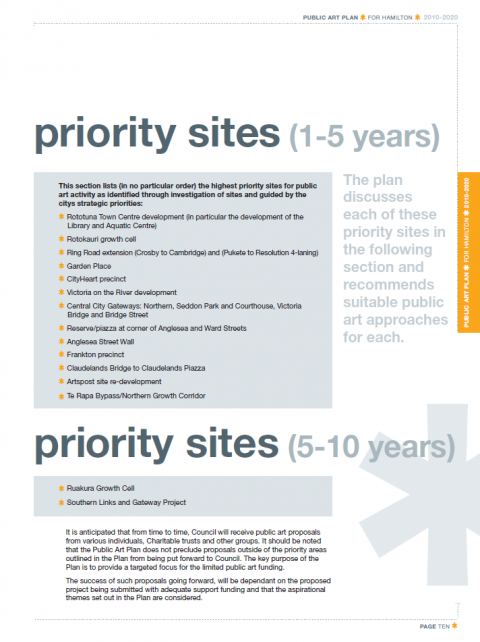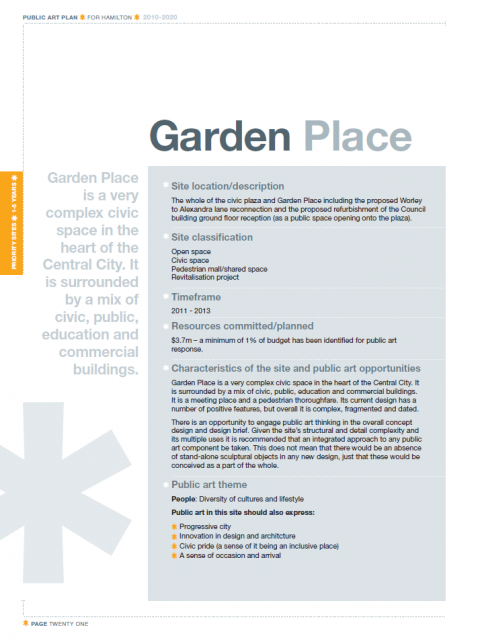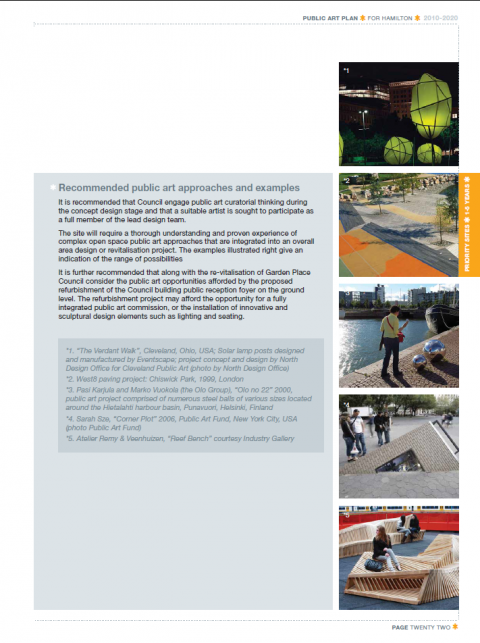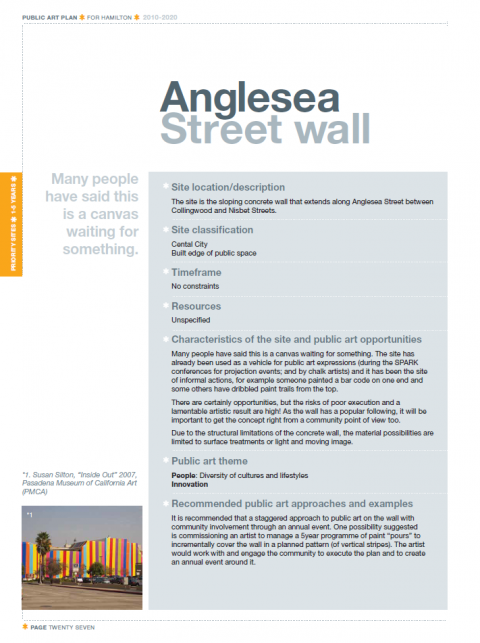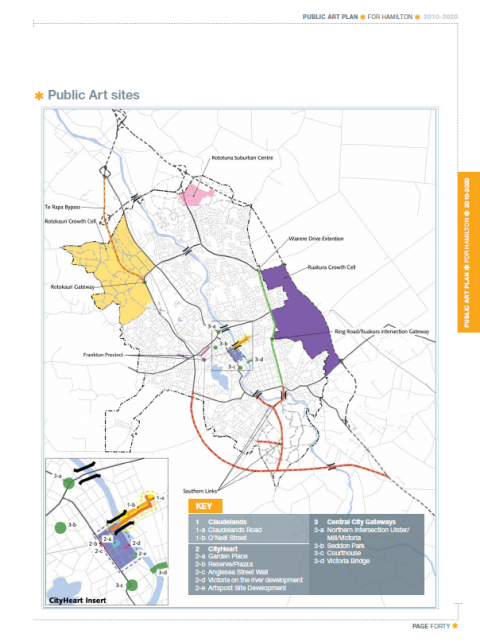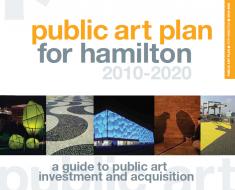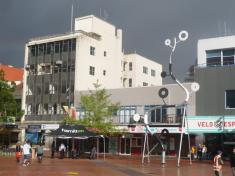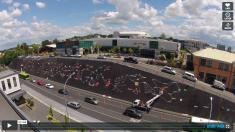Public art plan
Hamilton, 2010-2020
Rob Garrett was commissioned by Hamilton City to develop a 10-year public art plan that would assist the City Council to prioritise decision making in respect to public art acquisition and investment for the city.
While public art approaches, activities and objects can be understood as a public good in themselves, and as an expression of a city’s cultural wellbeing and innovation, public art is also instrumental. Cities are increasingly using public art for various planning purposes because it contributes to economic development, gives expression to place in distinctive ways; reflects the diverse identities of its citizens; and solves many urban planning problems.
Public art planning involves a curatorial interpretation of place. In order to develop a programme of public art for a city, the complexity of place must be simplified to some degree in order to ensure thematic and visual coherency in the collection of public art that result. Needless to say, the simplifi cations must not obscure the city’s distinctive character or the specifics of site.
The plan identifies a number of indicative sites. But it goes further by indicating that those sites can be augmented by time-based and mobile projects that effectively create temporary “sites” for public art. This approach is particularly suited to the city heart precinct where change, variety, stimulus and surprise are important elements of an effective public art programme.
From a curatorial point of view, a site’s character and its uses are just as
important as its physical location. The categories therefore address the
location, function and value (strategic, cultural, enterprise, community,
historic, etc) and meanings to the people who inhabit, visit and/or use the
site. This classification also aids the development of the fi ne-grain site
analyses and curatorial briefs for artists that will be necessary as the next
stage of planning, site by site.
The 10-year Public Art Plan was also required to identify a number of over-arching curatorial themes for Hamilton City's public art to help guide future curatorial and project planning.
The characteristics of the city from which the themes are drawn, and which future public art projects will reflect and give expression to, are:
✱ The River as the dominant natural landmark. It possesses numerous cultural and historic sites of significance, and is a vital and distinctive element in the city’s portfolio of lifestyle amenities.
✱ The railway and major roading systems point to Hamilton’s character as a place of arrivals and as a hub for diverse connections. The railway also forms an important element of the city’s heritage stories and heritage features.
✱ With 25% of the country’s scientists, coupled with the research and innovation track record of the tertiary institutions and local industries, Hamilton is a significant place of innovation.
✱ Hamilton’s people are of increasingly diverse origins and its cultures span the long-standing presence of Tainui and early European settlement as well as the wide diversity of new migrant communities. This makes Hamilton a place of rich cultural diversity.
These characteristics are translated into four curatorial themes that will form the basis of a simple and coherent set of expressions for future public art projects that are at once reflective of the city and poetically and conceptually open enough for curators and artists to use them as valuable starting points in the creation of site specific public art concepts and projects:
✱ The River
✱ Arrivals and connections
✱ Innovation
✱ People
Using the themes in the development of future public art projects will be one mechanism by which the city can ensure its public art planning and delivery creates coherent public art experiences for residents and visitors alike. The use of these conceptual tools will help the city avoid fragmentation in its public art programme and any appearance that projects are derived in an ad hoc way, and will contribute towards project briefs and resulting public art works that are responsive to place.
Links:
Hamilton Public Art Plan 2010-20
Garden Place public art project: Neil Miller's "Te tiaho o Matariki"
Anglesea/Wintec Wall : "Mind Map" temporary public art project by Kim Paton
